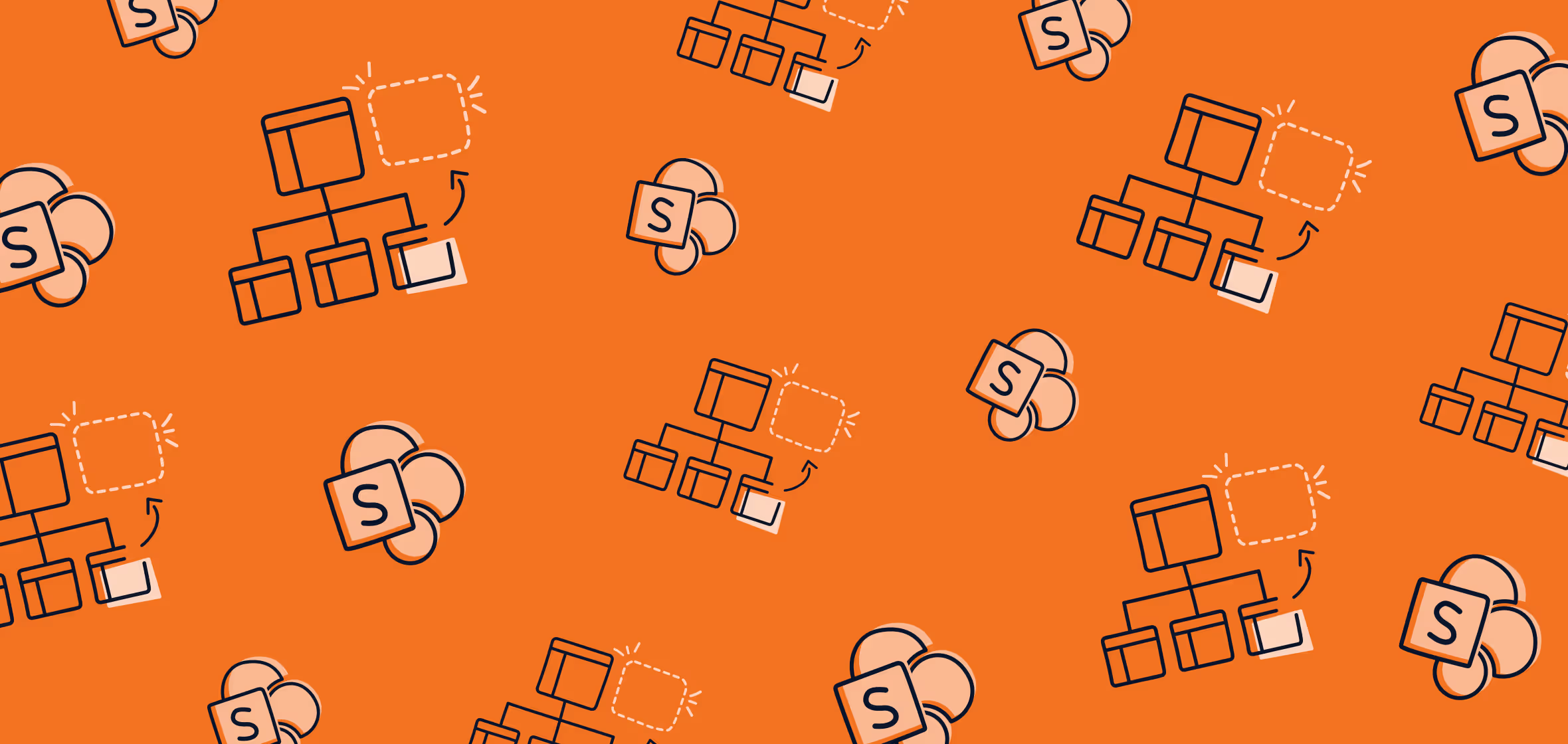"Teamify" existing subsites with the help of ShareGate

Table of contents
ShareGate makes it easy for existing subsites to benefit from modern workloads in Microsoft 365. We'll walk you through how to restructure and "groupify" in a couple of clicks—so you can integrate existing resources with Microsoft Teams.
The move to Microsoft 365 introduces new apps and services—including Microsoft 365 Groups, Planner, and Microsoft Teams—that enable users to collaborate in new ways and across multiple products.
With the recent, large-scale transition to virtual collaboration and remote work, many organizations are now scrambling to roll out these modern workloads as quickly as possible. And as the hub for teamwork and productivity, Teams especially has seen a dramatic surge in usage and adoption.
But Microsoft 365 groups—and by extension, teams in Microsoft Teams—only integrate with top-level site collections. Which means that if you want to deploy Teams for your existing SharePoint subsites, there's a bit more work you need to do, first.
Before you can "teamify" your subsites, you need to flatten your SharePoint environment. With ShareGate, our migration and content management tool, you can promote your subsites to top-level sites and attach them to new Microsoft 365 groups in just a few clicks. That way, it's easy to deploy Teams on top of those resources you've already invested time in.
The future of SharePoint is flat
It used to be that most SharePoint environments were built using a top-down hierarchy: they had a few top-level site collections with multiple layers of subsites underneath. But the introduction of Microsoft 365 Groups and the modern SharePoint experience in SharePoint Online made subsites a thing of the past.
With modern SharePoint, every site you create is essentially its own top-level site collection—no more subsites—so that your intranet structure is flat. The idea is that a flat topology makes it easier to move things around as your organization continues to evolve; subsites make reorganization tricky because they inherit permissions, navigations, and site designs from the site collection they're nested under.
One of the biggest benefits to adopting a flat site structure is that all your sites can be connected to a Microsoft 365 group, since groups can only be attached to top-level site collections. Once you "groupify" a SharePoint site, it can benefit from all of the other group-connected services such as Planner and Microsoft Teams.
"Groupify": What happens when you connect a SharePoint site to a Microsoft 365 group?
When you groupify an existing SharePoint site, several important things happen automatically:
- A new Microsoft 365 group is provisioned and is connected to your site collection
- Your site's homepage is replaced with a modern home page
- The group owners are made administrators of the site collection and added to your site's "Owners" group
- The group members are added to your site's "Members" group
After you groupify an existing classic SharePoint site, it behaves like a modern group-connected team site. So if you grant someone access to the Microsoft 365 group, they simultaneously gain access to the SharePoint site and all other associated services—including the Microsoft Teams team (if one has been created).
How to "teamify" an existing SharePoint subsite
But what if you have a ton of existing subsites and want to deploy Microsoft Teams?
In that case, you still need to take the following steps after you move to Microsoft 365:
- Convert the subsite to a top-level site collection (flatten)
- Connect the new top-level site to a Microsoft 365 Group ("groupify")
- Create a team for your site's new Microsoft 365 group ("teamify")
Manually moving subsites to the top-level in SharePoint is time-consuming. You can copy and move document libraries to a new site collection in SharePoint Online, but you'll need to recreate all of your subsite's structural elements in a new site—essentially, rebuilding your existing infrastructure from the ground up.
Not only that, but manually moving your content that way won't transfer custom metadata. And if your library uses versioning, only the latest version will be moved over.
If you've already invested time and energy customizing your intranet's infrastructure, you might be wondering whether you can actually adopt collaborative tools like Microsoft Teams.
Teamify an existing subsite: Use case
Let's say that an organization originally created its SharePoint environment in SharePoint 2013 using a few top-level site collections and subsites for each department nested underneath—the method preached by Microsoft and the SharePoint community of experts at the time.
A few years ago, the organization migrated to SharePoint Online to take advantage of all that the cloud has to offer. But the SharePoint architecture was migrated as-is, retaining all of those subsites as part of the infrastructure.
For example, the "Technical support" subsite lives within the "Support" site collection:

You can also tell that "Technical support" is a subsite by looking at its URL structure:
businessname.sharepoint.com/sites/Support/techsupport
Now, with the recent rise in remote work and virtual methods of collaboration, the organization wants to deploy Microsoft Teams. But that means they need to flatten their SharePoint site structure, first.
Luckily, the organization's IT admin (yours truly) renewed their ShareGate subscription to continue managing content post-migration. That means the "Technical support" subsite can be promoted and groupified in just a few clicks!
Teamify an existing subsite with the help of ShareGate
Have no fear! With the Promote feature in ShareGate, we've made it easy for your existing subsites to benefit from modern workloads in Microsoft 365, too.
Here's how it works: ShareGate converts your subsite to a site collection by migrating it to the same level as your other site collections. And thanks to our customizable options, you can change the site template of the new site collection to a modern SharePoint team site—which automatically connects it to a new Microsoft 365 group!
After that, it's easy to teamify your new team site.
Promote and groupify at the same time
Anyone with Global admin permissions and access to ShareGate can head over to the Copy tab, select Restructure environment and click on Promote subsite into site to access the Promote feature.

Step 1: Select the existing subsite(s) you want to promote
Note: ShareGate allows you to promote multiple subsites at once. But for the sake of this blog post, we're going to focus on how to promote the "Technical support" one.
On the next screen, ShareGate shows you all of your sites and subsites at a glance—giving you all the information you need to get started. In this case, we're going to select the "Technical support" subsite (underneath the "Support" site collection), then click Continue to options.

Step 2: Customize your options and preview your new site structure
On the Options screen, you can set up a new name, URL, and—to take advantage of modern workloads like Teams—a new site template as you prepare for the transformation from top-down to flat.
ShareGate also provides a visual preview of your promotion before it happens, so you can make changes and adapt if you need to.
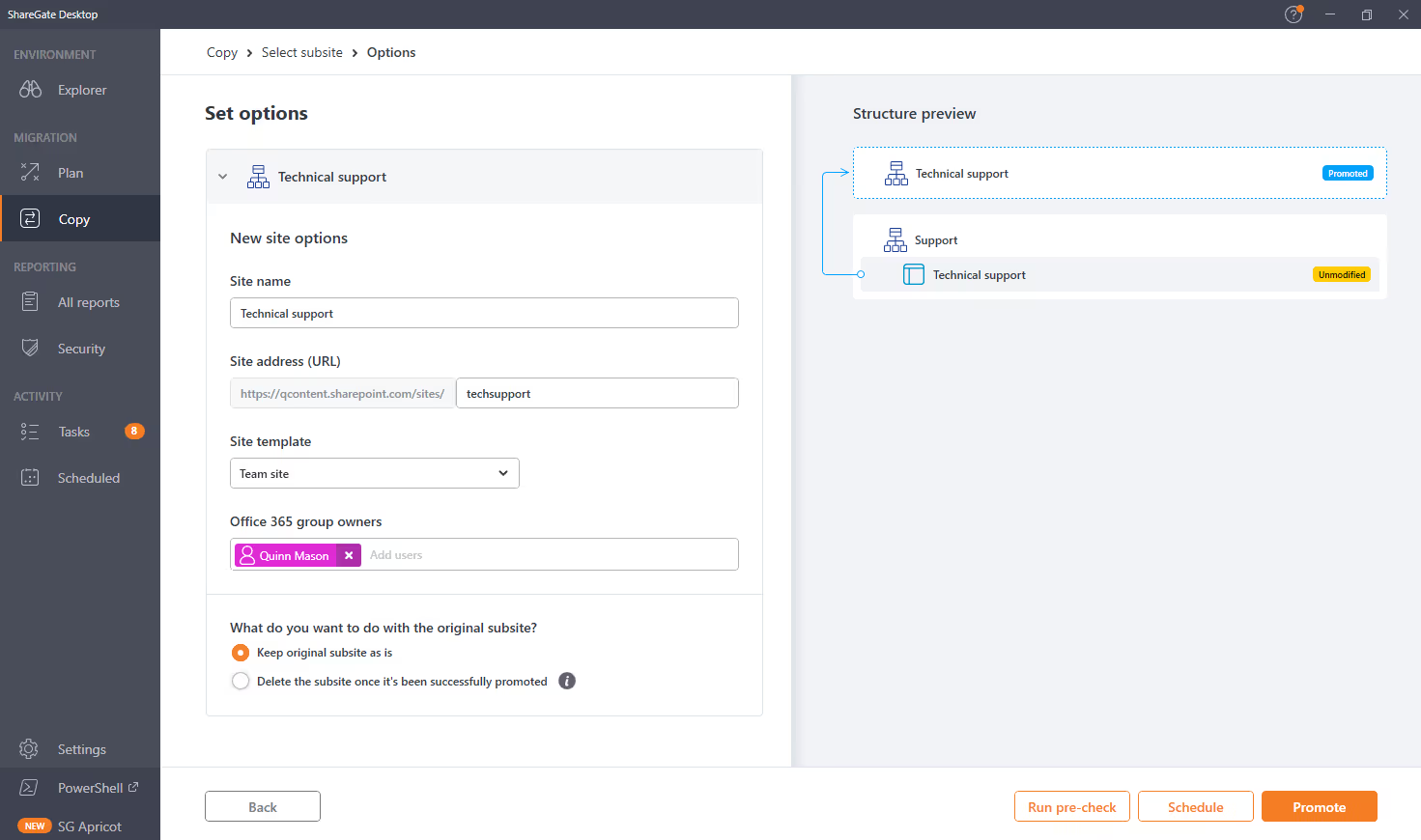
Setting a new site template is important—this is where you tell ShareGate to groupify your new site collection.
In the "Site template" drop-down list, we're going to select the modern Team site template. Promoting a subsite with the modern Team site template creates a new Microsoft 365 group and attaches it to the new team site.
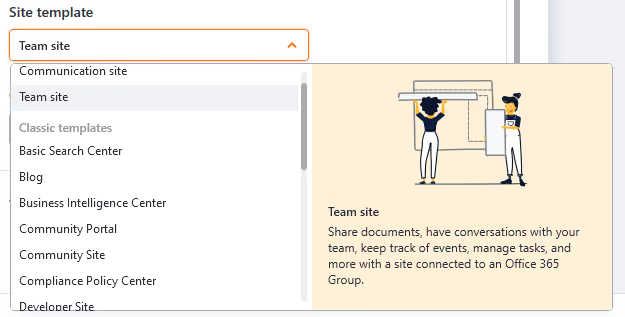
The default administrator list will include administrators from the parent site collection (in this case, the "Support" site), and the site owners of the subsite. But you can also choose to add owners to the resulting Microsoft 365 group on the Options screen.
Finally, select what you want to do with the original subsite.
- Keep original subsite as is: Promote the subsite as a new site collection and keep the original
- Delete the subsite after a successful promote process: Promote the subsite as a new site collection and delete the original after it's been copied (although if any errors pop up on the subsite or the promotion is canceled, the delete operation won't occur)
Click on Promote to start your subsite promotion, or Schedule to set it to start at time that's convenient for you.
ShareGate generates a detailed report of everything happening during your subsite promotion. See any issues if they popped up, as well potential solutions to fix them, so that you can be sure of a successful transformation.

Teamify your new top-level site
Once promotion is completed for the "Technical support" subsite, we can see a few changes in our Microsoft 365.
For one thing, the URL of our new site collection has a different structure than the "Technical support" subsite:
businessname.sharepoint.com/sites/techsupport
And in the Microsoft 365 admin center, under Groups, we can see a new Microsoft 365 group named "Technical support".
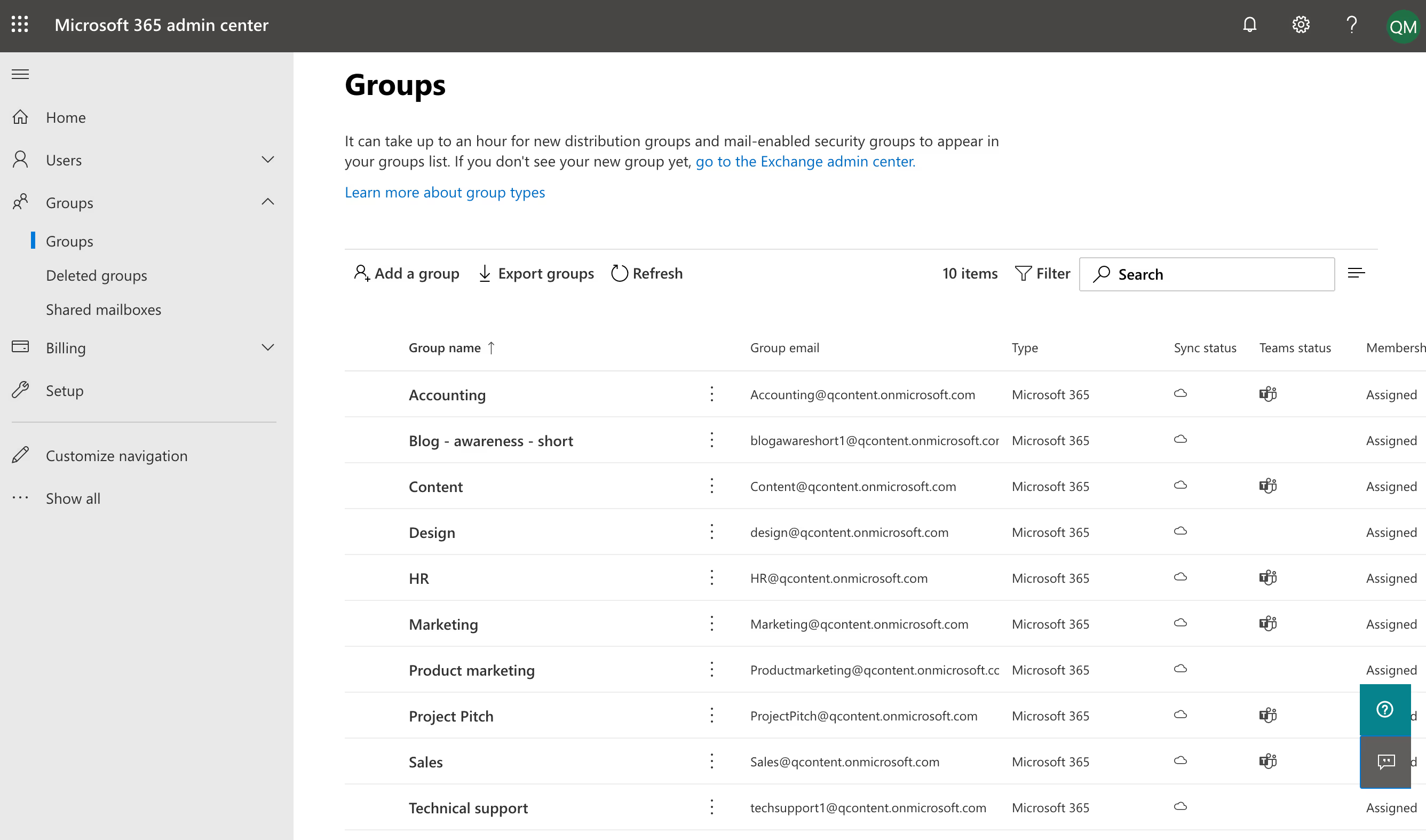
If we click on it, we can see more details—including date of creation, membership, and settings—and can also see that an Exchange mailbox and email address have been created for the group.
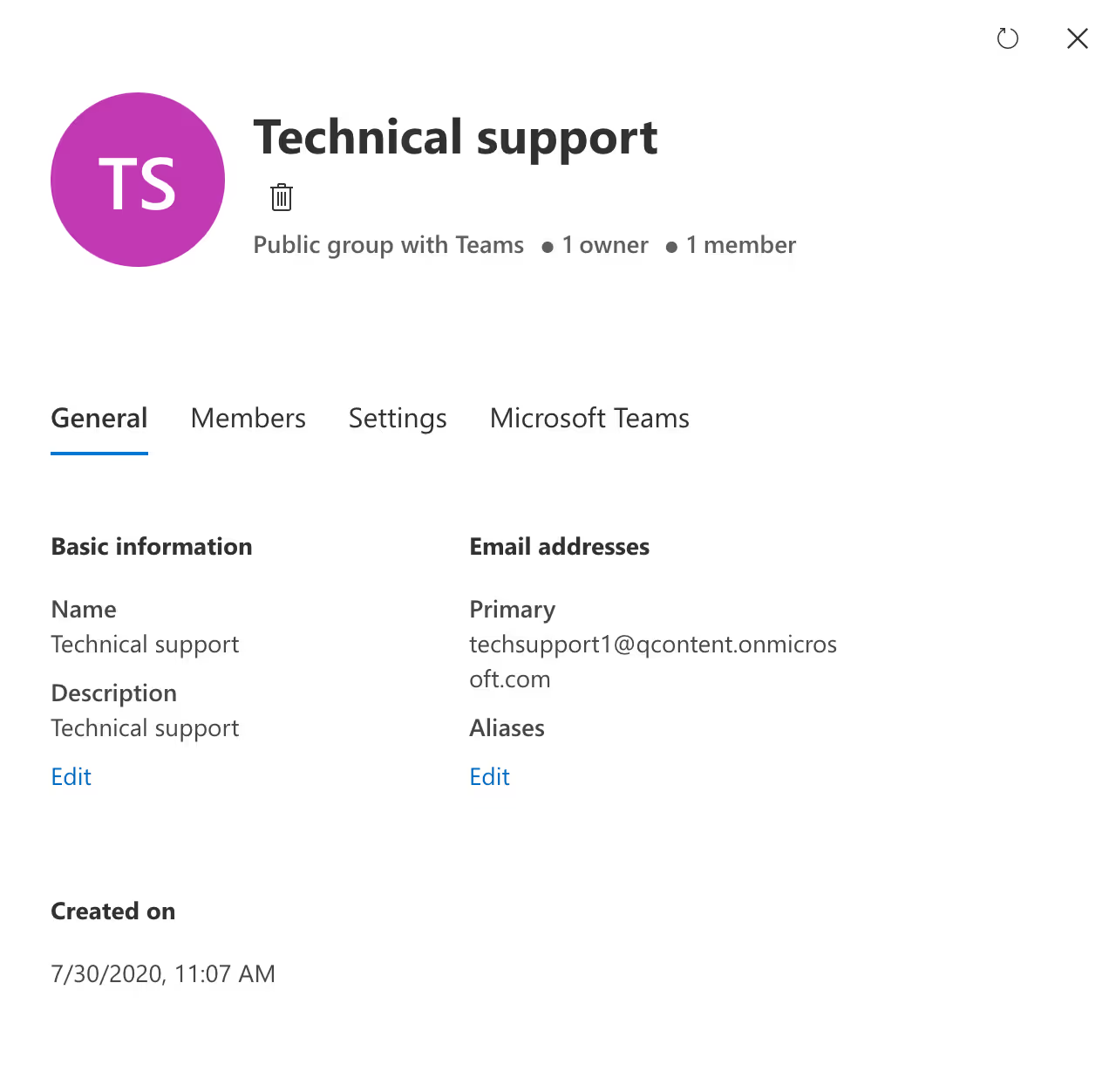
However, while some workloads, such as the Exchange email address and Outlook calendar, are provisioned automatically when a new Microsoft 365 group is created, connecting a new team in Microsoft Teams requires one extra step.
One way to teamify our new site collection is through the Microsoft Teams tab in this group details pane. All we have to do is click on Create a team to connect a new team to our SharePoint site.
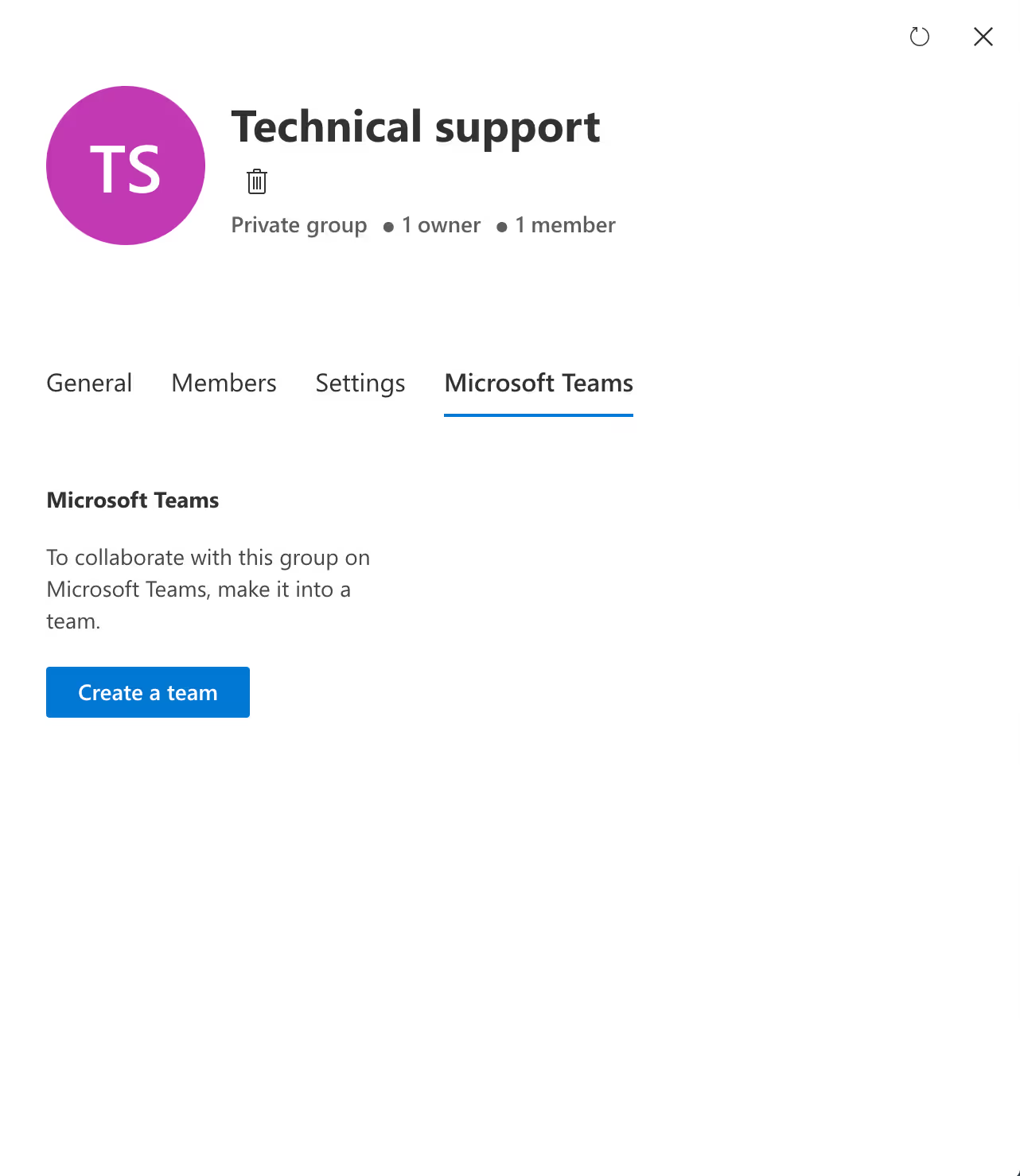
Another way to teamify our new site collection is to connect a team directly from the SharePoint site itself.
If we navigate to our new "Technical support" team site, we can now see a Microsoft Teams icon in the bottom left corner of the screen. Clicking on Create a Team here will also teamify our SharePoint site.

Both methods result in a new "Technical support" team—one that's attached to the existing resources built up in what was, until recently, a subsite!
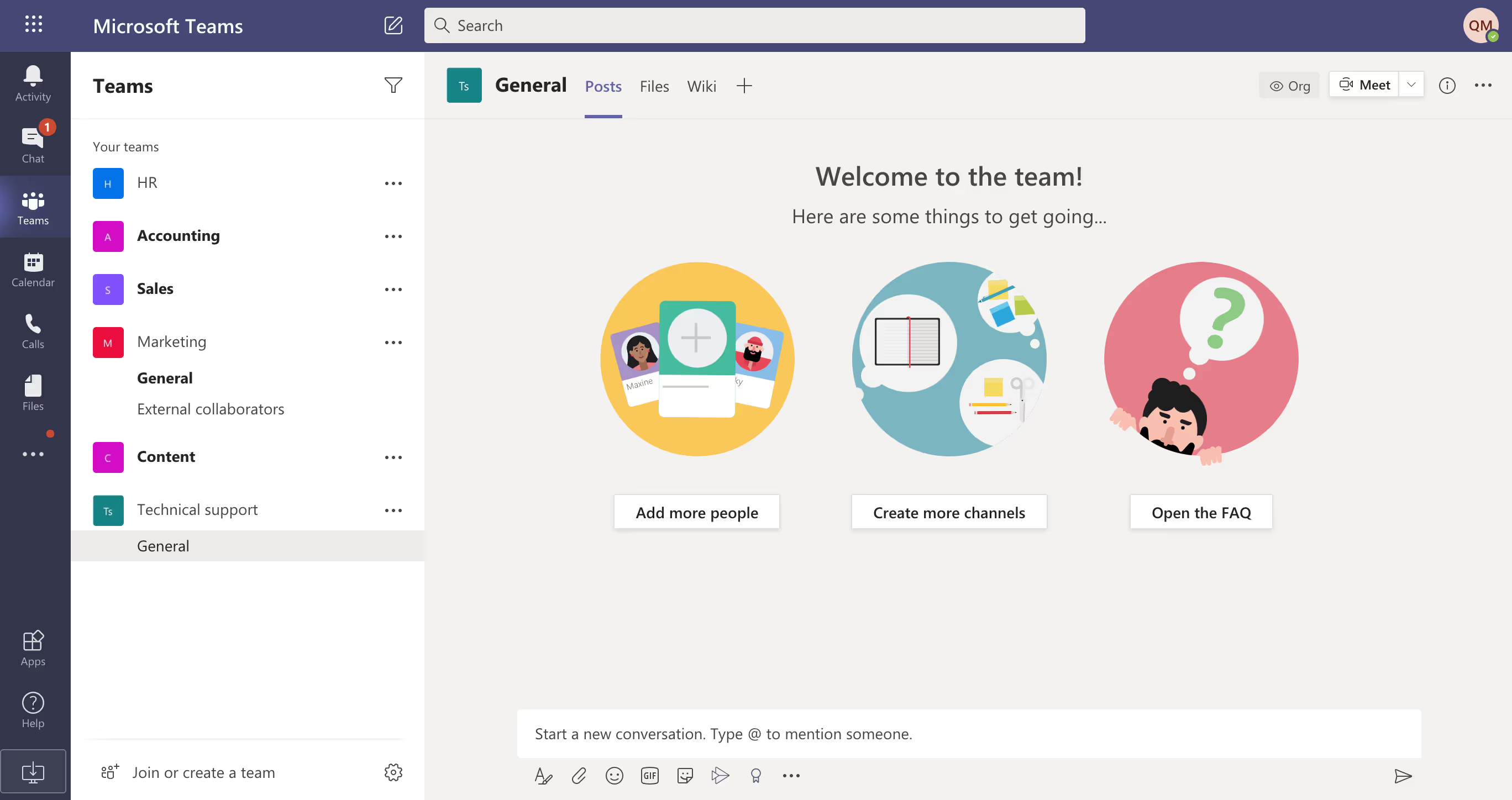
Make it easy for end users to do the right thing in Teams
Deploying and scaling Microsoft Teams requires a well-defined strategy and consistent effort on the part of IT. If users don't know what they're doing, you can end up with duplicate teams, multiplying Microsoft 365 apps, and tons of files shared externally.
Once you've teamified your existing Sharepoint sites, guide users towards secure and productive collaboration in Microsoft 365 with our automated governance tool for Microsoft Teams and Microsoft 365 Groups. Get full visibility across each team's lifecycle—from creation through archival—and automate manual tasks involved in identifying problem areas, like inactive or orphaned teams.

If you haven't tried our popular SharePoint administration tool yet, what are you waiting for? ShareGate's UI isn't just just simple and intuitive—it's actually pleasant to use (really!).
Save time and streamline administrative tasks by managing permissions, metadata, and file structure in one convenient place. And effortlessly modernize your classic SharePoint sites to leverage collaboration tools like Microsoft Teams and Microsoft 365 Groups.
See for yourself with a free, full-featured 15-day trial.
.jpg)


.svg)
%20(1).avif)






